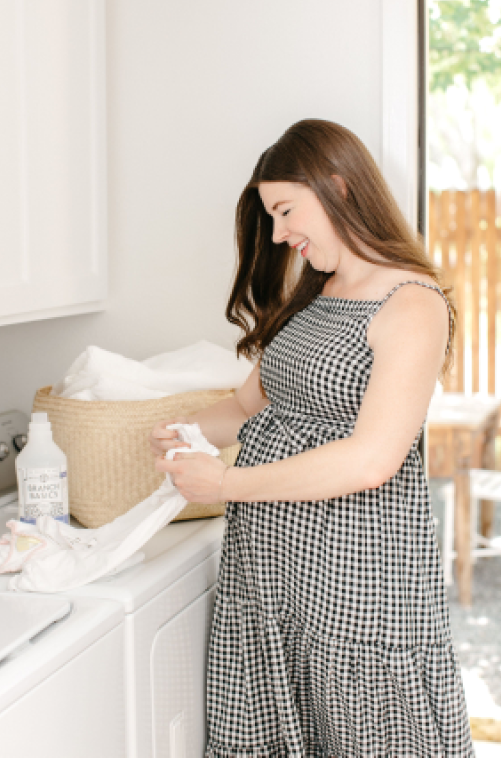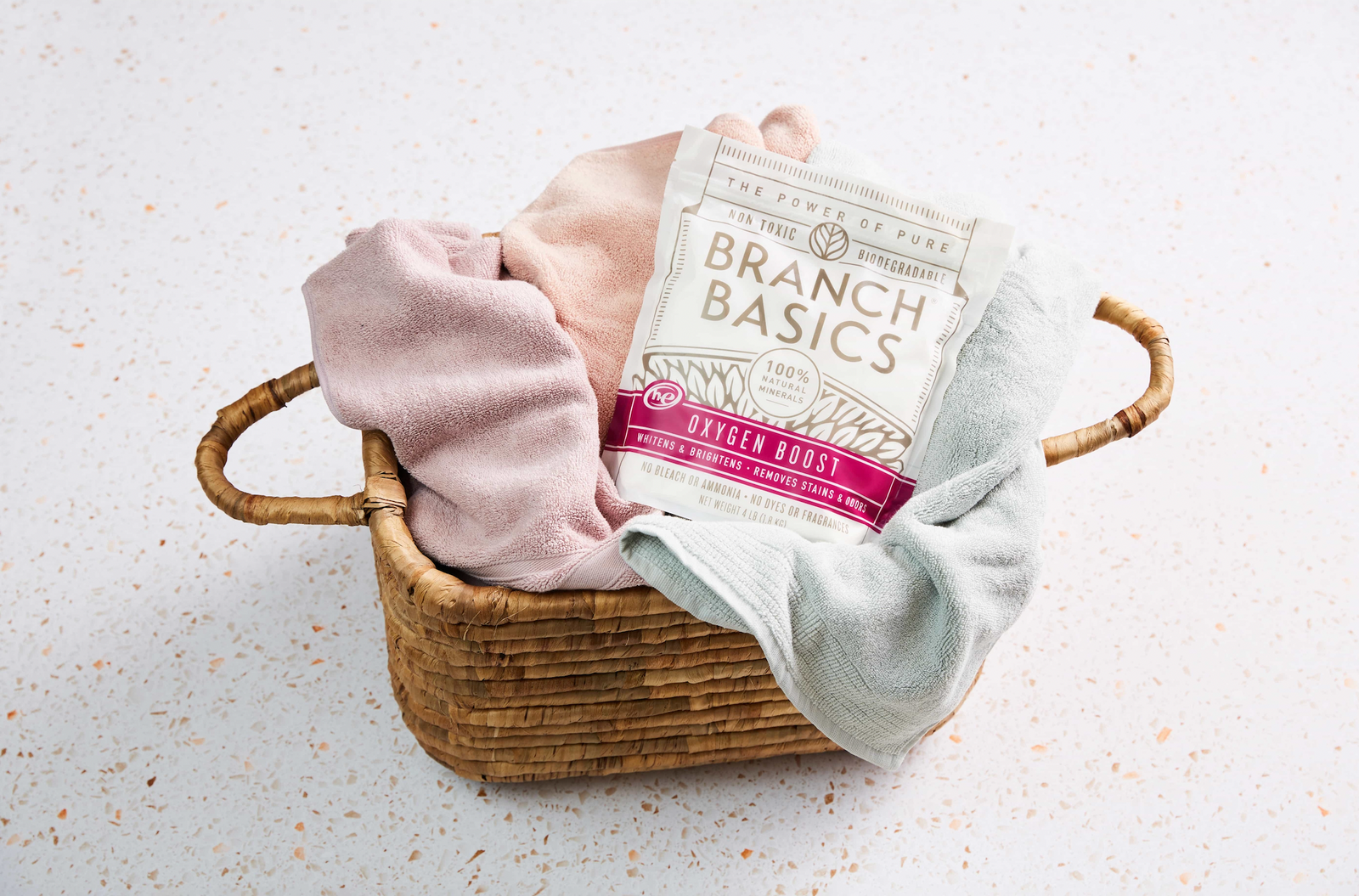How To Wash Dry-Clean Only Items At Home

Have you ever wondered how dry cleaners manage to get your delicates, suits, special occasion wear and cashmere sweaters clean? They use a chemical process involving solvents instead of water, which removes dirt and odors without damaging your clothes or altering their shape or size.
Unfortunately, these solvents have been proven to be extremely toxic and hazardous chemicals when breathed in or absorbed by the skin regularly.
Fortunately, most dry-clean only clothes can be cleaned at home with very little effort or risk of damaging fabric - you just need to know the right technique!
And for those rare items that do require professional cleaning, we have some helpful tips on how to reduce chemical residue and exposure at home.
Why Dry Cleaning Chemicals Are So Toxic
One of the most widely-used dry-cleaning chemicals is tetrachloroethylene, also known as perchloroethylene, “perc” or “dry cleaning fluid”.
This classified hazardous chemical goes by dozens of names and belongs to the chlorocarbon family.
It’s also widely used in wood processing, textile/fabric manufacturing, degreasing, the manufacture of fluorocarbons (think non-stick, stain-resistant, waterproof products), suede protectors, paint removers, furniture stripper, water repellents, silicone lubricants, spot removers, glues and wood cleaners.
Despite its prevalence in every-day products, tetrachloroethylene is an extremely dangerous chemical.
For starters, it’s “reasonably anticipated to be a human carcinogen” and has been linked to an increased risk of skin, colon, lung, esophageal and urogenital tract cancers as well as lymphosarcoma and leukemia.
It’s also a respiratory and eye irritant that has been shown to cause liver, kidney and lung damage, and has been linked to neurological problems and can negatively affect mood, memory, reaction time, and vision.
This is why people who work in dry cleaning facilities sadly appear to have higher rates of serious disease such as cervical, esophageal and bladder cancers, heart disease, diseases of the stomach,
As classified “hazardous waste” they also wreak havoc on the environment, especially when mismanaged.
This is why many municipal water systems, for example, test positive for tetrachloroethylene and its cousins (and a really good reason to invest in an excellent water filter).
Its chemical makeup also causes it to get into the air, which is a concern for air quality overall but especially for indoor, poorly ventilated spaces (like a closet).
We don’t share this information to be alarmist or to scare you, but rather to show that just because a practice is commonplace, doesn’t make it safe.
It also illustrates how important it is that we be our own advocates when it comes to matters of health and safety!
Unfortunately our regulatory agencies are failing us in this regard - both in terms of educating the public on risk vs. benefit and keeping us safe from these hazardous chemicals.
Dry-Clean Only Clothes You Can Wash At Home
Most dry clean only clothes can be easily cleaned at home by simple handwashing. There are exceptions which we will cover in the next section on how to detoxify dry cleaned clothes.
First, what types of fabrics can you safely hand wash at home?
- Wool
- Cashmere
- Silk
- Polyester
- Light colored, non-printed silks
- Cotton
- Linen
- Rayon blends or viscose are usually OK, but may require dry cleaning depending on the style of the garment (see next section for tips)
- Down-filled duvets, sleeping bags, winter coats, etc. can also be washed at home
How To Handwash Dry-Clean Only Clothes At Home With Branch Basics
Branch Basics Concentrate (at full strength) is ideal for delicates and most dry-clean only clothes because it works beautifully without the need for potentially damaging rubbing and agitation.
However, we do not recommend using Oxygen Boost on wool, wool blends, silk, silk blends, leather or any fabrics labeled “dry-clean only”.
Here’s what you’ll need:
- Branch Basics Concentrate (full strength, not Laundry)
- Branch Basics All-Purpose (for stains)
- A large bowl, tub or laundry sink
Step 1: Pre-treat stains by applying All-Purpose and agitating very gently using a soft brush or cloth. Rinse to see if the stain has lifted, if not, repeat.
When pre-treating stains on silk, test a small area first by spraying a little All Purpose, then wetting. Stubborn stains may need to sit for 15 minutes or more (see our Branch Basics Stain Master Guide for more info on removing all types of stains on nearly every type of fabric).
Step 2: Fill your sink, bowl, or bucket with cool water and ½ teaspoon of the Concentrate.
Step 3: Soak your dry clean only clothes for 15 - 30 minutes. Gently agitate. This does the cleaning!
Step 4: Rinse by hand or run in the gentle cycle of your washer.
Step 5: Hang to dry or lie flat as needed.
For down comforters and coats, you can typically wash these on the gentle cycle in your washer using your standard amount of Branch Basics Laundry (3/4 - 1 capful). Then dry in your dryer on low using wool dryer balls. The dryer balls are key as they’ll help re-distribute the down evenly.
Note: front loading washers (HE) are ideal for comforters due to the absence of an agitator which makes the washing cycle gentler overall and prevents large comforters from getting tangled in the washer. However, we know plenty of people who wash their comforters in top loaders without a problem. When in doubt, check with the manufacturer.
More of a visual learner? Check out our YouTube video:
5 Tips For Air Drying After Hand Washing
Air drying clothes after hand washing can be a wet tedious mess, especially if you can’t dry them outdoors.
Here are a few tips to help:
- For faster drying that’s still gentle, you can roll your cashmere or wool sweaters up in a towel, pressing down as you go (think rolling a burrito!), then unroll them and lay them to dry.
- For some semi-delicate fabrics like wools or polyesters, you can use your washer’s spin cycle to get the majority of the wetness out.
- If you plan on hand washing a lot of clothes, you could invest in a clothes wringer which wrings out the clothes between two rollers as you hand crank it. Yes, it’s old fashioned but it can really save a lot of drying time! It would also come in handy if your dryer ever breaks or during a prolonged power outage (plus, it’s easy on the hands/wrists).
- Many types of clothing, like sweaters, should be dried flat to prevent stretching. In this case, a flat drying rack can be a great space-saver. This over-the-door model is genius, but there are tons of other makes and models you can research.
- Showers, baths, decks, or porches are also great places to line-dry clothes if you don’t have a dedicated clothesline. Just hang them up using clothes hangers on chairs, bars, hooks, etc. and let them drip dry without the mess. There are also many types of collapsible/portable/camping clothes lines for indoor or outdoor use.
Tip: If items are wrinkled after drying (which they usually are), you can try putting them on a low-heat setting in the dryer for a few minutes, hanging them up in the bathroom to steam while you shower, use the “steam” setting on your iron to go over them (without touching the fabric), or invest in a home clothes steamer.
Detoxifying Dry-Cleaned Clothing (+ What Not To Wash At Home)
What about those garments that cannot be properly washed at home?
Fabrics/clothing best left to the professionals include:
- Suits, women’s formal jackets and sport coats
- Formal wear
- Pleated skirts or pants
- Trench coats, or any type of formal overcoat that needs to keep its shape
- Leather
- Suede
- Clothing adorned with beading, sequins, etc.
- Velvet
- Some rayon/viscose garments
- Fur or fur-lined garments
- Any garment that needs to keep its shape
Most of us will have at least a few of these items in our closets, but don’t fear! There are ways to help eliminate much of the dry cleaning chemical residue.
For starters, some cities and towns have non-toxic or “organic” dry cleaners. Now, that doesn’t necessarily mean everything they use is 100% safe or natural. However, it should be safer than what a conventional dry cleaner uses. The only way to know for sure is to call them up and ask them about everything they use.
For the rest of us who don’t live within reasonable distance to a non-toxic dry cleaner, use these handy tips to help reduce/eliminate chemical residue:
Tip: When you pick up your dry clean only clothes, drive home with the windows open. This increases ventilation which reduces the amount of chemicals you’ll breathe in while driving.
Another tip!: Outgas/offgas your clothing before bringing indoors. Using gloves (because our skin absorbs toxins too), remove your dry clean only garments from their bags. Let them sit outside (preferably in the sun, but take caution with bright colors as they may fade) to offgas/outgas until no smell is detectable. The fresh air and heat from the sun will help vaporize the chemical smell and solvent residue.
You can put them on a clothesline, hang them over a banister on your porch or deck, whatever works to help them air out effectively.
What About Rain and Dew?
Always bring the dry cleaned clothes under cover before it rains or in the early evening before the dew falls.
Place them on a covered porch or inside the garage.
If necessary, place the clothes in a room that can be isolated by closing the HVAC registers, running an air purifier in the room to pick up the VOCs, and running a box fan to increase air movement to help outgas the dry cleaning chemicals.
Take the clothes back out when weather permits.
Continue until all smell from the dry cleaning process is gone.
Tip: Use a hand steamer on your clothes to accelerate outgassing! Hand steam the garment on the porch or where you have lots of ventilation as the heat will help to drive out the VOCs from the garment.
And For More Human-Safe Laundry and Clothing Tips...
If this post got you excited about detoxifying your clothing and laundry routine, you’ll love these other articles and resources:
How To Choose Healthy And Sustainable Clothing
Detoxifying Clothing And Bedding: A Thorough Guide
What Is Offgassing (Or Outgassing) And How To Use It To Your Advantage

Marilee Nelson
Marilee Nelson is an Environmental Toxins expert who has spent nearly 30 years advocating for the chemically-sensitive and chronically-ill. She is a Board Certified Nutritionist, Certified Bau-Biologist and Bau-Biology Inspector and specializes in Food As Medicine. She has helped thousands of families and individuals identify, heal and recover from toxic exposures and is on a mission to revolutionize the way American families view their health.







